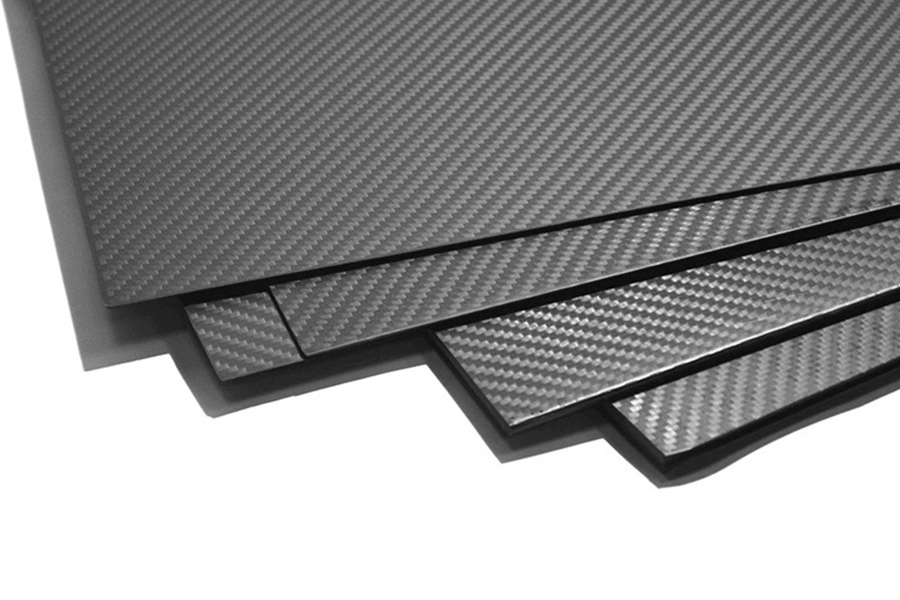
Carbon fiber board has the following main advantages over aluminum board:
Strength and stiffness: Carbon fiber board has excellent strength and stiffness characteristics, which are higher than aluminum boards of the same weight. Its specific strength (ratio of strength to density) is usually higher than that of aluminum board, which makes carbon fiber board excellent in applications that require high-strength and lightweight materials.
Lightweight: Carbon fiber board is a lightweight material that is lighter than aluminum board. Its density is usually only about half that of aluminum plate, so carbon fiber board is an ideal choice for applications that pursue weight reduction and energy conservation. For example, in fields such as aerospace, automotive manufacturing, and sports equipment, the lightweight performance of carbon fiber board can bring better performance and benefits.

High temperature performance: Carbon fiber board has excellent high temperature performance. It can maintain good strength and stiffness in high-temperature environments, while aluminum plates may deform or lose strength under high-temperature conditions. This gives carbon fiber board advantages in applications that require high-temperature loads or environments, such as aerospace and engine components.
High durability: Carbon fiber board has good resistance to fatigue and vibration, and can maintain stable performance for a long time. In contrast, aluminum plates may be more susceptible to fatigue and vibration. This makes carbon fiber board more suitable for applications that require high durability and vibration resistance, such as racing cars, wind turbine blades, etc.
It should be noted that carbon fiber board also has some limitations and challenges, such as high cost, relatively poor corrosion resistance, and complex processing. Therefore, when selecting materials, comprehensive consideration should be given to specific application needs and situations.
Copyright ? 2023-2028 Weihai Toriolai Fiber Co., Ltd Filing number:魯ICP備2023035583號 Technical support: Weihai Pinmo Technology